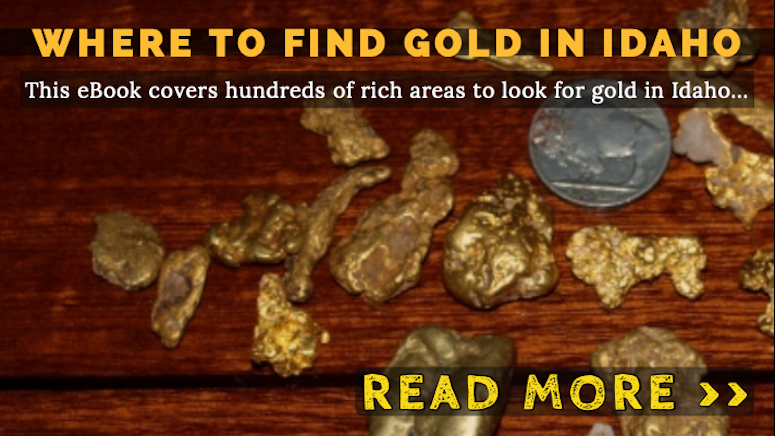
Idaho is a state with some extremely remote areas, so use your head and don’t go into the backcountry unless you are well prepared. Make certain that you have all the supplies you will need – not just for prospecting but for keeping yourself safe.
Never venture in with food, water, and first aid supplies. Some of the roads are ROUGH, so definitely don’t go back without spare tires.
Having said all that, Idaho is an awesome place to prospect. Unlike many states in the east and south, over 2/3 of Idaho is public BLM and Forest Service land, which is open to prospecting, for the most part. You can find gold all over Idaho. If you don’t mind making the effort, you stand a good chance of seeing some color.
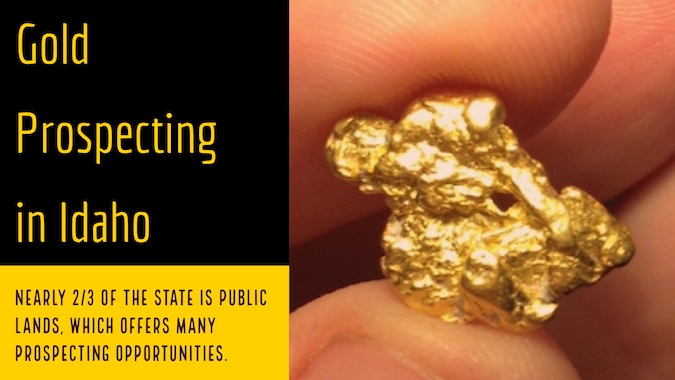
Major Gold Strikes in Idaho
The mother of all Idaho discoveries was in 1862, with the Boise Basin gold strike. Recovery from that region counted in the millions of ounces of gold, and included several small mining towns that still exist today, including Placerville, Pioneerville, Centerville, and the largest being Idaho City.
Although the area is not noted for producing big nuggets, all the streams produced placer gold by bucket line dredging or hydraulic mining. Some large examples of gold in quartz have been discovered weighing over a pound, so maybe you’ll be lucky prospecting in the tailings. Primarily, though, fine gold and small pickers is what you would expect to find here.
Atlanta, at the foot of the Sawtooth Mountains, also produced good amounts of placer and lode gold. Located in Elmore County, there is a lot left to find. All waters produce and are worth your time. Areas of note in Elmore County are Pine and Featherville.
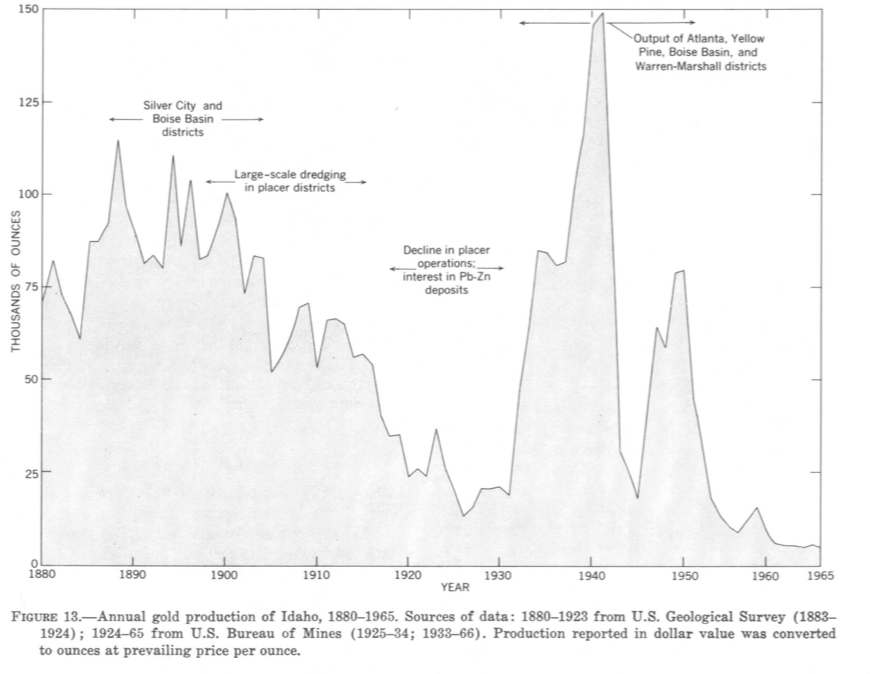
*Notice the large spike in gold production starting in the 1930s. Even though the true gold rushes were long over, several huge bucket line dredges were in operation at this time. This accounted for an astounding amount of gold recovery during the years following the Great Depression.
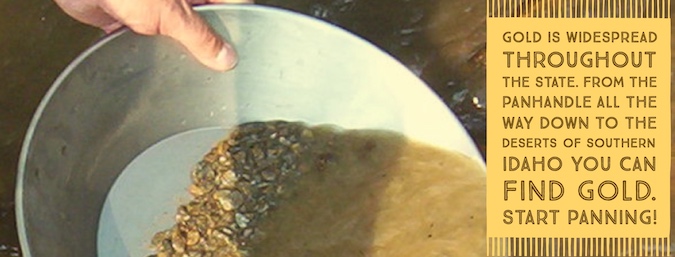
In remote Owyhee County, Silver was discovered on War Eagle Mountain in the Owyhee Mountains, bringing thousands of miners into the area from 1864 forward. There a few seasonal creeks, and Jordan Creek is rich. Silver City is worth the trip just to see a fine example of an Idaho ghost town. Although it is home to quite a few year-round residents, there are examples of some fine old buildings, and you can see some interesting old mining equipment. Also, the cemetery is definitely worth a look.
The Florence mining district is located in the central portion of the state. The mining season is short due to the high elevation, meaning that the snows come early and melt late. Also the area is pretty rugged terrain. Below Florence, the Salmon River can be reached by Highway 95, and offers plenty of finer gold.
The Silver Valley Mining District is still one of the top silver producing areas in the world. It is located in the northern panhandle of Idaho, and produces primarily silver, but also zinc and lead. Almost a billion ounces of silver has come out of the Silver Valley, and there is placer gold in a lot of the rivers and creeks in that area.
Also Read: Oregon’s Largest Gold Nugget on Public Display
Other Rich Mining Districts
Several other areas of note are Elk City, Leesburg, Yankee Fork, Bayhorse, Burgdorf, Warren, Yellowjacket, and Murray. Some of these places still have towns with people; others are long gone with little evidence to show that they ever existed.
Usually the best bet for prospectors is find the location of the early mines. Most of them were abandoned long ago, but they are indicators of generally rich area. Whether you try panning in a nearby creek or metal detect the nearby ore piles in search of specimens, finding the old mines is the best way to start.
Pick a creek in central Idaho and the chances are pretty good that you will be able to find some gold.
Look at the diagram below. It documents over 40 of the major gold producing districts in the state. But these are just the major gold producers. There are hundreds of lesser-known areas that may not be commercially viable, yet they will still turn up some decent gold for a hard working prospector.

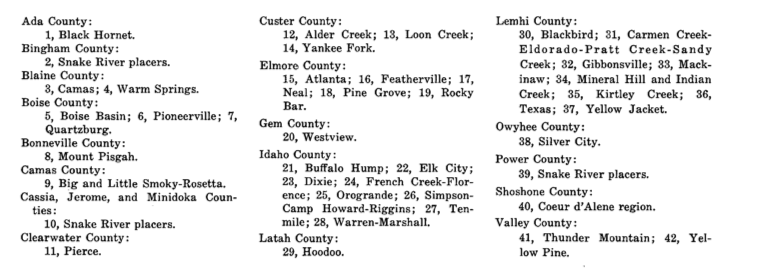
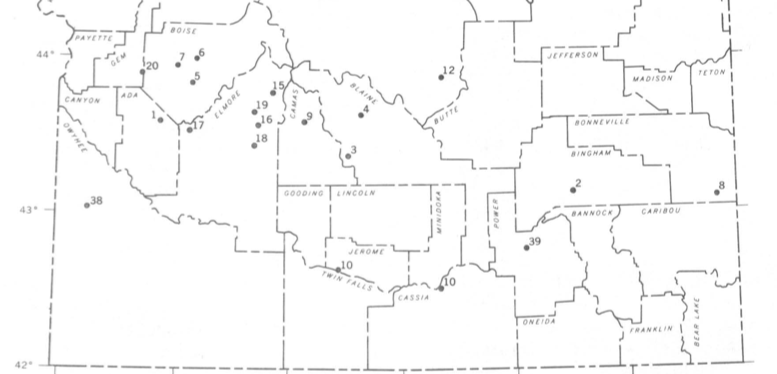
Next: Boise Basin – The Largest Gold Strike in Idaho

